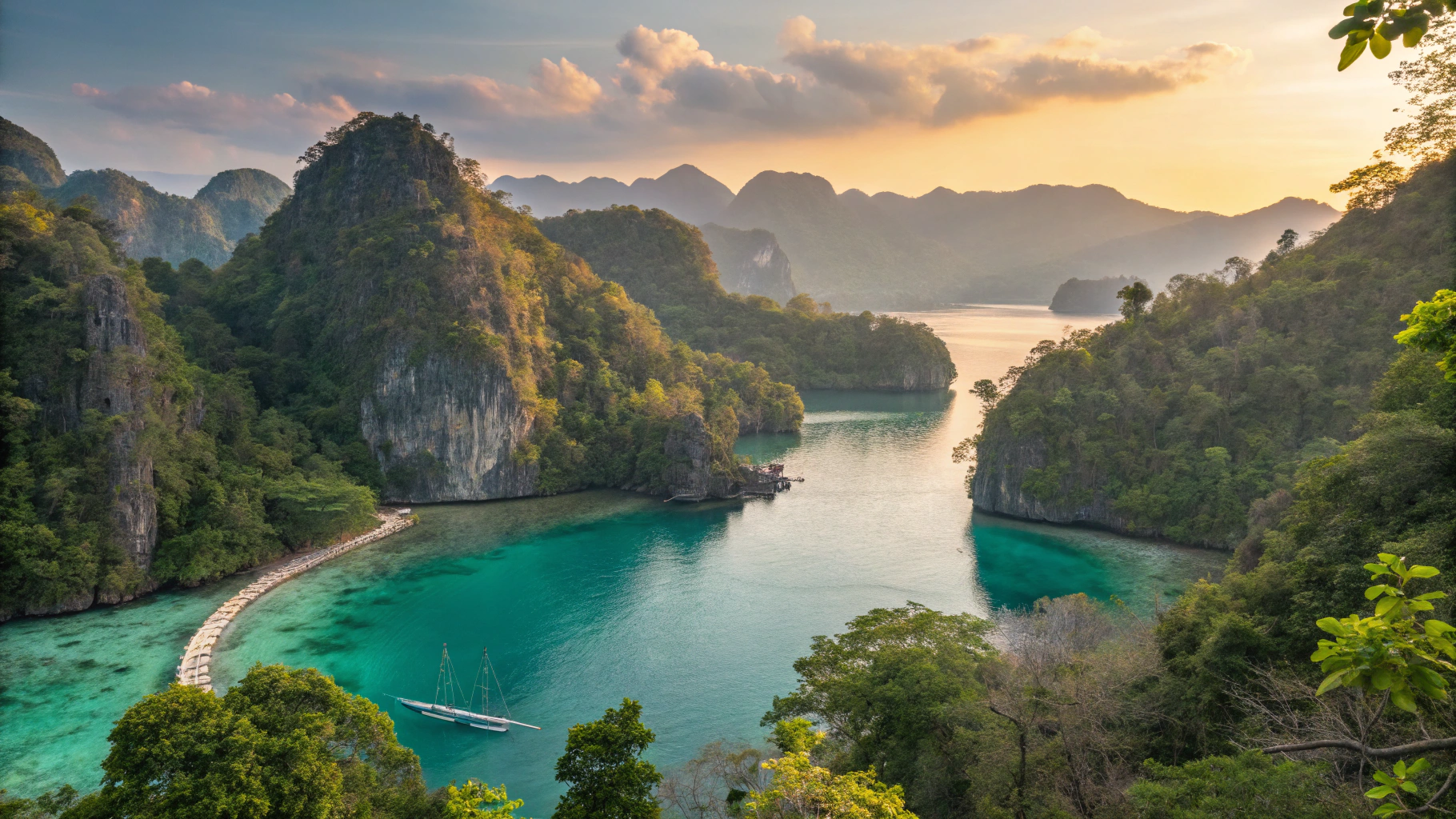The first time I washed up on the shores of Koh Kood in Thailand, I thought I’d found the edge of the world. The jungle spilled right into the sea, the water shimmered like glass, and the only sounds were the rustle of palm leaves and the occasional splash of a fish.
Asia is bursting with places like this—hidden gems that don’t clog your Instagram feed but leave you with stories you’ll tell for years. Forget the overcrowded temples and tourist-packed beaches; these 10 stunning spots are where the real magic happens.
I’ve trekked through Asia’s chaos and calm, from Hanoi’s honking streets to Bali’s packed shores, but it’s the quieter corners—like Koh Kood or Bhutan’s Haa Valley—that keep pulling me back.
They’re the kind of places where you can sip tea with a monk, wander trails without a soul in sight, or just sit and let the world unfold.
In this article, I’m sharing my favorite off-the-radar destinations, mixing tales from my travels with the nitty-gritty you’ll need to plan your own adventure. Let’s kick things off with two gems that’ll make you wonder why they’re still secrets.
Koh Kood, Thailand: The Island Time Forgot
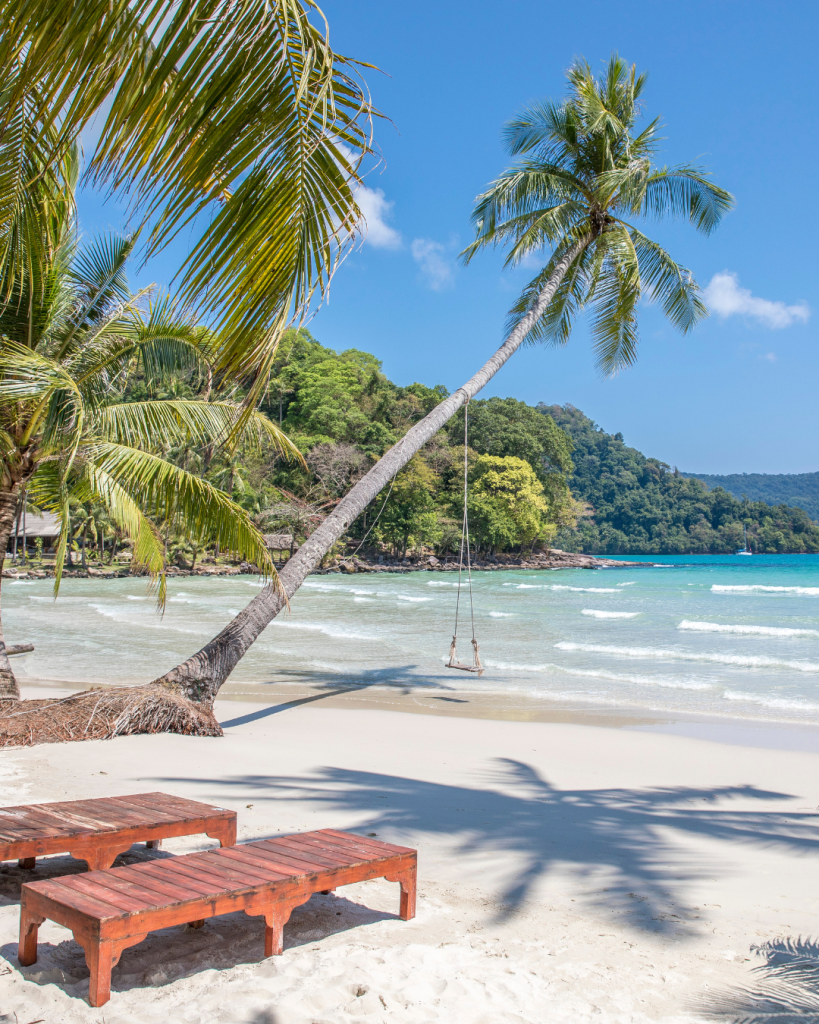
A Quiet Paradise
Koh Kood hit me like a whisper after the roar of Bangkok. I arrived on a sleepy ferry, my backpack slung over one shoulder, and stepped onto a beach so pristine it felt like a movie set.
This island, near the Cambodian border, is Thailand’s fourth-largest but somehow still flies under the radar.
No high-rises, no party crowds—just hammocks, emerald waters, and a stillness that sinks into your bones.
Essential Visitor Information
When to Visit
November to February is prime time—dry, sunny, and warm, with highs around 32°C (90°F). I went in December, and it was bliss—perfect for lounging or kayaking without melting.
Getting There
From Bangkok, grab a bus to Trat (5-6 hours, $8-$12 USD as of February 2025), then a ferry from Laem Sok Pier to Koh Kood (1 hour, $15 round trip). Speedboats are pricier at $25-$30 but cut the trip to 45 minutes.
I took the slow ferry and spent the ride chatting with a local fisherman about the day’s catch.
Costs
Koh Kood is affordable luxury. Bungalows start at $30-$50 per night, while resorts with pools run $80-$120. Meals are cheap—$3-$6 for street eats, $8-$12 at restaurants. My daily spend averaged $50, including a cold Singha beer or two ($2 each).
Where to Stay
- Siam Beach Resort: Beachfront huts for $40-$60. I loved the porch views here.
- Tinkerbell Resort: Splurge-worthy at $100-$150, with private infinity pools.
- Guesthouses like Bann Makok: Cozy and basic at $25-$35.
Must-See Places
- Klong Chao Beach: Crystal-clear water and soft sand—I swam here daily.
- Huang Nam Keaw Waterfall: A short hike to a refreshing dip spot. Free entry, bring a towel.
- Fisherman’s Village (Ao Salad): Wooden stilts over the water, perfect for sunset photos.
Food Recommendations
Thai flavors shine on Koh Kood. I devoured tom yum goong (spicy shrimp soup) for $5—tangy and fiery in all the right ways. Fresh fish, grilled with lemongrass, costs $6-$8. Don’t skip khanom jeen (fermented rice noodles with curry) from a stall for $3.
Local Tips
- Rent a kayak ($10/day) to explore hidden coves.
- Cash is king—ATMs are rare.
- Say “sawasdee” (hello) with a smile; it opens doors.
Haa Valley, Bhutan: The Land of Happiness

A Himalayan Hideaway
Haa Valley felt like stepping into a painting. I stood on a hillside, prayer flags fluttering in the wind, as yaks grazed below and the Himalayas loomed like silent giants.
Tucked in western Bhutan, this valley is a world away from the crowds of Paro or Thimphu. It’s raw, peaceful, and so beautiful it almost hurts to look at it.
Essential Visitor Information
When to Visit
Spring (March-May) and autumn (September-November) are ideal—clear skies and mild temps around 15-20°C (59-68°F). I visited in October, and the golden light on the mountains was unforgettable.
Getting There
Fly into Paro (Bhutan’s only international airport, $400-$600 from Bangkok or Delhi), then drive 3 hours to Haa Valley.
Private taxis cost $50-$70; shared ones are $10-$15 but less reliable. The road winds through pine forests—stunning but bumpy, so brace yourself.
Costs
Bhutan’s tourism policy means a $100 daily fee (down from $250 in 2025), covering lodging, food, and a guide.
Budget an extra $20-$50/day for souvenirs or tips. It’s not cheap, but the experience is priceless.
Where to Stay
- Haa Valley Homestay: $100/day via the fee, with home-cooked meals. I stayed with a family and felt like kin.
- Lechuna Heritage Lodge: Rustic charm for the same rate, near monasteries.
- Camping: Pitch a tent for free if you’re with a guide—nights under the stars are chilly but epic.
Must-See Places
- Chele La Pass: At 3,988m, the views are jaw-dropping. I hiked up and nearly cried.
- Haa Dzong: A small fortress with big history—quiet and free to roam.
- Lhakhang Karpo & Nagpo: White and black temples, steeped in legend.
Food Recommendations
Bhutanese food is hearty and spicy. Ema datshi (chili cheese stew) is a must—$5-$7 and fiery enough to wake you up. I loved phaksha paa (pork with radish) for $6. Wash it down with ara, a local rice wine ($2-$3).
Local Tips
- Dress warmly—nights drop to 5°C (41°F).
- Respect sacred sites; cover your shoulders.
- Learn “kuzuzangpo la” (hello)—it’s a warm icebreaker.
Raja Ampat, Indonesia: The Underwater Eden

A Diver’s Dream
The first time I slipped beneath the waves in Raja Ampat, I swear I forgot how to breathe—ironic for a snorkeler. The water was a kaleidoscope of coral and fish, so clear I could see every flicker of a clownfish’s fins.
Tucked in West Papua, this archipelago of 1,500 islands is a hidden gem for anyone who loves the sea. Above water, jagged limestone peaks and jungles teeming with birds make it just as stunning.
I spent days hopping between islands, feeling like an explorer in a world untouched by time.
Essential Visitor Information
When to Visit
October to April is the sweet spot—calm seas and sunny days around 30°C (86°F). I went in November, and the visibility underwater was unreal, stretching 30 meters or more.
Getting There
Start in Jakarta or Bali, then fly to Sorong (2-3 hours, $100-$150 USD as of February 2025). From Sorong, ferries or speedboats take you to Raja Ampat’s main islands like Waigeo or Misool (1-2 hours, $20-$50). I took a speedboat—pricey but worth it for the extra time exploring.
Costs
Raja Ampat isn’t cheap, but it’s manageable. A marine park permit is $70 (valid for a year), and stays range from $30-$60 for basic homestays to $150-$300 for dive resorts. Meals cost $5-$15, depending on whether you’re eating fish curry at a warung or dining at a lodge. My daily budget was around $80-$100.
Where to Stay
- Homestays on Kri Island: Simple rooms for $40-$60, often with meals. I stayed here and loved the family vibes.
- Raja Ampat Dive Lodge: $150-$200 per night, perfect for divers with gear included.
- Budget Camps: Some locals offer beach tents for $20-$30—raw but unforgettable.
Must-See Places
- Pianemo Viewpoint: Climb for a panorama of turquoise lagoons. I snapped a hundred photos here.
- Wayag Islands: Iconic karsts rising from the sea—rent a boat ($50-$100/day).
- Cape Kri: Snorkel or dive among 374 fish species in one spot. Mind-blowing.
Food Recommendations
Indonesian flavors rule here. Try ikan bakar (grilled fish with sambal) for $6-$8—fresh off the boat. I couldn’t get enough of soto ayam (chicken soup with turmeric) for $4. For a sweet fix, grab pisang goreng (fried bananas) for $1-$2.
Local Tips
- Bring extra cash—ATMs are in Sorong, not the islands.
- Pack reef-safe sunscreen; the coral’s too precious to damage.
- Say “terima kasih” (thank you) to locals—it’s a small gesture that goes far.
Yakushima, Japan: The Forest of Giants
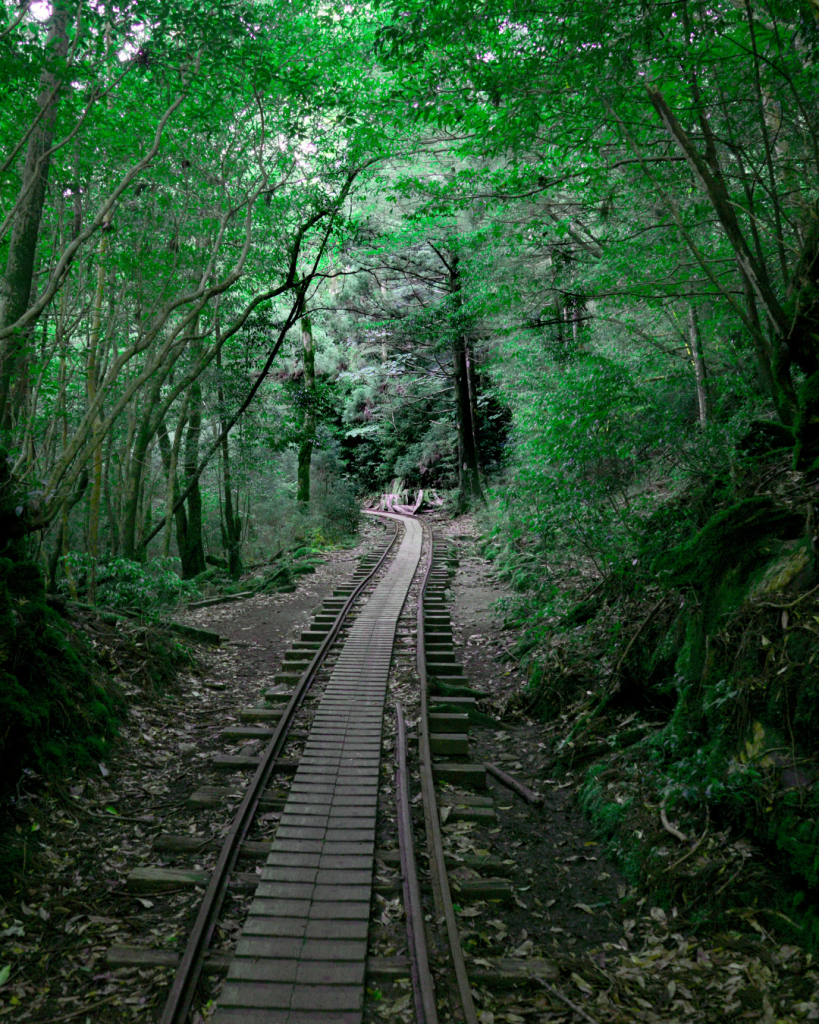
A Step Into Fantasy
Yakushima felt like walking into a Studio Ghibli film. I wandered through moss-covered forests where ancient cedar trees, some over 1,000 years old, towered above me.
This island off southern Kyushu is a hidden gem for nature lovers—lush, wild, and dripping with misty charm.
My boots crunched on the trails, and every turn revealed waterfalls or glimpses of the sea. It’s Japan, but not the Japan you expect.
Essential Visitor Information
When to Visit
March to May or September to November—temperate weather (15-25°C/59-77°F) and fewer crowds. I visited in October, and the autumn hues made the forests glow.
Getting There
Fly from Tokyo or Osaka to Kagoshima (1.5 hours, $80-$120), then take a ferry (2-3 hours, $40-$60 round trip) or a quick flight (30 minutes, $100-$150) to Yakushima.
I chose the ferry—cheaper and scenic, with dolphins trailing us partway.
Costs
Yakushima is mid-range. Guesthouses start at $40-$70 per night, while ryokans (traditional inns) with onsen baths run $100-$180. Meals are $5-$15—ramen to sushi. I spent about $70/day, including trail snacks.
Where to Stay
- Sankara Hotel & Spa: Luxe at $150-$250, with forest views. I splurged one night and didn’t regret it.
- Minshuku Shiiba: Cozy guesthouse for $50-$70, homey and authentic.
- Camping: Free at designated sites—bring your own gear for a wild night.
Must-See Places
- Shiratani Unsuikyo: A trail through mossy woods to epic views. I hiked it in 4 hours.
- Yakusugi Land: Ancient cedars like Jomon Sugi—pack good shoes.
- Hirauchi Kaichu Onsen: Hot springs in the sea at low tide ($2 entry). Soaking here was pure zen.
Food Recommendations
Japanese comfort food shines. I slurped shoyu ramen for $7—rich and warming after a hike. Satsuma-age (fried fish cakes) cost $3-$5 and paired perfectly with a $2 sake. Don’t miss kurobuta pork cutlets ($10-$12)—tender and juicy.
Local Tips
- Rent a car ($40-$60/day) for flexibility—buses are sparse.
- Check tide times for the onsen visit.
- Greet locals with “konnichiwa” (hello)—they’re shy but kind.
Song Kul Lake, Kyrgyzstan: The High-Altitude Haven

A Nomad’s Retreat
The first time I laid eyes on Song Kul Lake, I was breathless—and not just from the 3,000-meter altitude.
I’d jolted up a rocky road in a battered 4×4, only to find a shimmering expanse of water ringed by snow-dusted peaks and grazing horses.
This alpine lake in Kyrgyzstan is a hidden gem where nomadic herders still live in yurts, and the air smells of wildflowers and freedom.
I spent a night under a blanket of stars, the silence broken only by the crackle of a yurt fire.
Essential Visitor Information
When to Visit
June to September is your window—summer melts the snow, and temps hover between 10-20°C (50-68°F).
I went in July, and the meadows were alive with color, though nights still dipped near freezing.
Getting There
Fly into Bishkek (from Istanbul or Moscow, $200-$300), then hire a driver or join a tour to Song Kul (6-8 hours, $50-$100 round trip).
The road’s rough—think dirt tracks and steep climbs—so a 4×4 is non-negotiable. I teamed up with other travelers to split the cost.
Costs
Kyrgyzstan’s a steal. Yurt stays with meals run $20-$40 per night, booked through locals or tour agencies. Food’s cheap—$3-$5 for a meal, $1 for tea. My daily spend was under $50, even with tips for the herders.
Where to Stay
- Yurt Camps: $20-$40, including dinner and breakfast. I stayed in one near the lake’s edge—cozy and authentic.
- Guesthouses in Kochkor: $15-$25 en route, if you break the trip.
- Wild Camping: Free if you’ve got gear, but bring warm layers.
Must-See Places
- Lake Shore: Walk or ride horseback ($10/hour) along the water. I galloped with a guide—exhilarating.
- Petroglyphs: Ancient rock carvings nearby, free if you can find them.
- Jailoo Pastures: Rolling hills where nomads graze their flocks—pure peace.
Food Recommendations
Kyrgyz cuisine is hearty. Beshbarmak (noodles with meat broth) costs $4-$6 and warms you up. I loved kymyz (fermented mare’s milk, $1-$2)—tangy and odd but a rite of passage. Grab boorsok (fried dough) for $1 to snack on.
Local Tips
- Bring cash in Kyrgyz som—cards don’t work up here.
- Layer up; the wind bites at night.
- Say “sala” (hello) to herders—they might invite you for tea.
Phong Nha, Vietnam: The Cave Kingdom
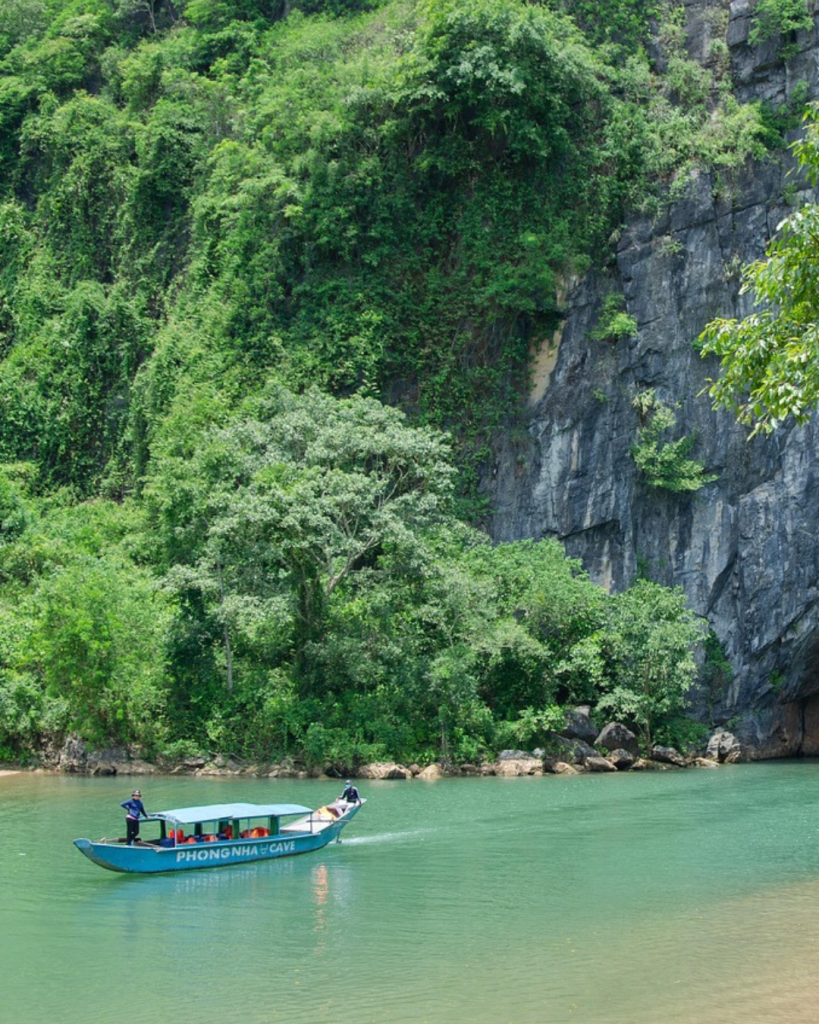
An Underground Adventure
Phong Nha snuck up on me. I’d heard whispers of Vietnam’s caves, but standing in the mouth of Paradise Cave, surrounded by stalactites glowing like chandeliers, I was floored.
This town in Quang Binh province is a hidden gem for explorers—limestone peaks, jungle rivers, and caverns that feel plucked from a sci-fi film.
I kayaked through mist one morning, the quiet broken only by dripping water and my own gasps.
Essential Visitor Information
When to Visit
February to August—dry and warm, 25-35°C (77-95°F). I visited in April, dodging the rainy season’s floods and enjoying clear trails.
Getting There
Fly to Hanoi or Ho Chi Minh City, then take a domestic flight or train to Dong Hoi (1 hour flight, $50-$80; 10-hour train, $20-$40). From Dong Hoi, it’s a 45-minute taxi or bus to Phong Nha ($10-$15). I took the train—slow but scenic.
Costs
Phong Nha’s budget-friendly. Guesthouses start at $10-$25, hotels with pools at $40-$60. Cave tours range from $15 (Phong Nha Cave) to $80 (multi-day treks). Meals are $2-$5. I averaged $40/day.
Where to Stay
- Phong Nha Farmstay: $30-$50, with rice paddy views. I loved the poolside beers here.
- Easy Tiger Hostel: $8-$12 dorms, great for meeting travelers.
- Jungle Boss Homestay: $20-$30, close to the action.
Must-See Places
- Paradise Cave: $12 entry, a 7km wonder. I walked the first kilometer in awe.
- Phong Nha Cave: $7 boat trip through a river cave—eerie and cool.
- Dark Cave: Zipline and mud baths for $20—messy fun.
Food Recommendations
Vietnamese classics shine. Bun bo (beef noodle soup) is $2-$3 and slurp-worthy. I devoured banh xeo (crispy pancakes) for $3—so fresh. Try ca phe sua da (iced coffee with condensed milk) for $1—it’s a jolt of joy.
Local Tips
- Book cave tours in advance; they sell out.
- Rent a bike ($5/day) to roam the park.
- “Xin chao” (hello) earns smiles from vendors.
Perhentian Islands, Malaysia: The Tropical Escape
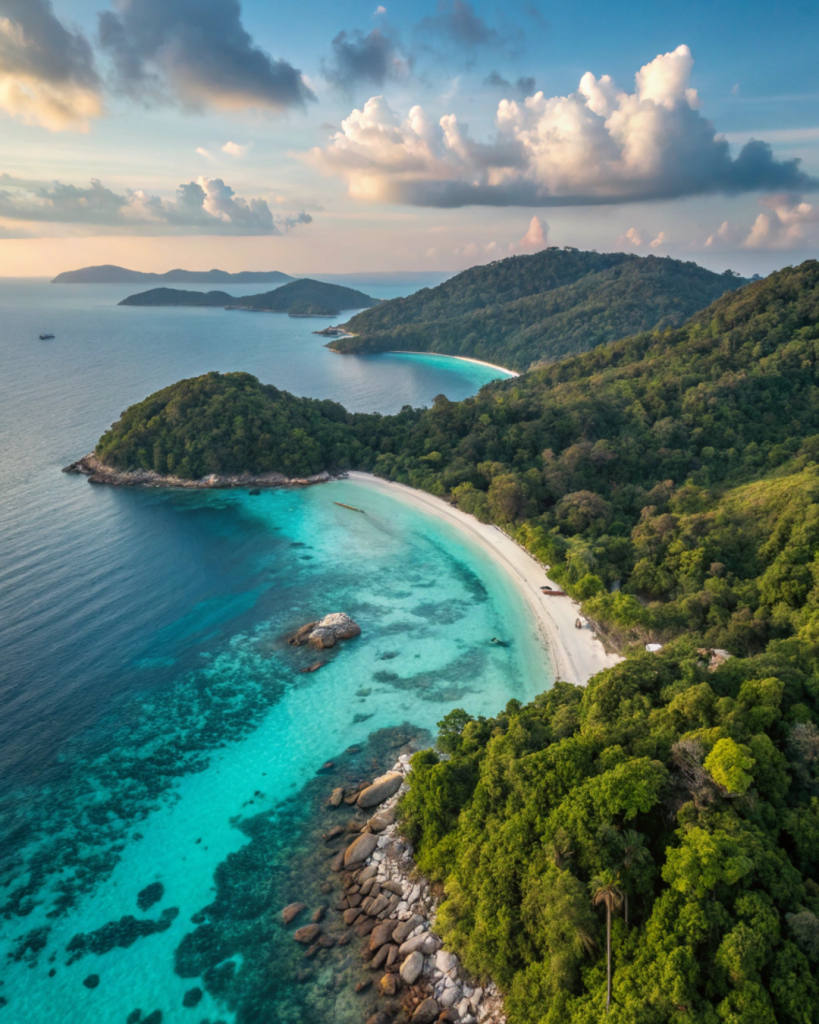
A Beach Lover’s Secret
The Perhentians hit me like a wave of pure joy. I stepped off a speedboat onto Pulau Kecil, the smaller of the two main islands, and sank my toes into sand so soft it felt like powdered sugar.
Tucked off Malaysia’s northeast coast, this pair of islands—Kecil and Besar—is a hidden gem where the water’s so clear you can see fish darting from the shore.
I spent lazy days snorkeling and nights under a sky full of stars, wondering why this paradise isn’t on every traveler’s radar.
Essential Visitor Information
When to Visit
March to October—dry, sunny, and warm at 28-32°C (82-90°F). I went in June, and the sea was calm enough to spot turtles without a ripple.
Getting There
Fly to Kuala Lumpur, then hop a short flight to Kota Bharu ($30-$50) or Kuala Terengganu ($40-$60). From either, it’s a 1-hour taxi ($15-$20) to Kuala Besut jetty, then a 30-45 minute speedboat to the islands ($10-$15 round trip). I flew to Kota Bharu—quick and painless.
Costs
The Perhentians are wallet-friendly. Bungalows start at $20-$40, dive resorts at $60-$100. Meals cost $3-$7, and snorkeling trips are $15-$25. My daily spend hovered around $50, including a coconut or two ($1 each).
Where to Stay
- Bubu Long Beach Resort: $80-$120 on Besar, with beachfront vibes. I splurged here and loved it.
- Shari-La Island Resort: $30-$50 on Kecil—simple and close to the action.
- Hostels like Ombak: $10-$15 dorms, perfect for solo travelers.
Must-See Places
- Turtle Beach: Shallow waters teeming with green turtles. I snorkeled here for $15—unreal.
- Romantic Beach: Quiet and pristine on Besar—bring a book.
- Windmill Hill: A short hike on Kecil for sunset views that stole my breath.
Food Recommendations
Malaysian flavors pop here. Nasi lemak (coconut rice with sambal) is $3-$5 and divine. I devoured ikan bakar (grilled fish) for $5 straight off the BBQ. Sip teh tarik (pulled tea) for $1—it’s frothy bliss.
Local Tips
- No ATMs—bring Malaysian ringgit.
- Skip heels; it’s all flip-flops and sand.
- “Terima kasih” (thank you) wins grins from locals.
Rara Lake, Nepal: The Sky’s Mirror
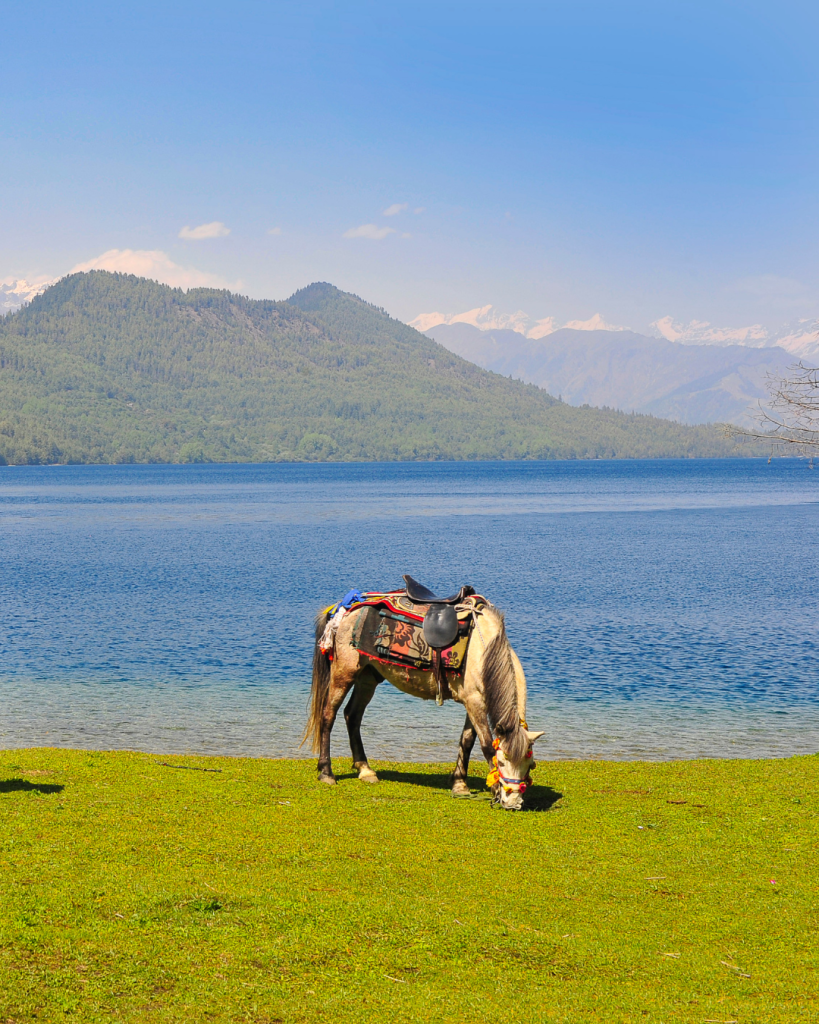
A Himalayan Gem
Rara Lake stopped me in my tracks. I’d trekked through dust and pines in Nepal’s remote west, and suddenly there it was—a turquoise pool at 2,990 meters, reflecting snowcaps like a postcard I’d never send because I wanted to keep it mine.
This hidden gem in Mugu District is Nepal’s largest lake, quiet and wild, with mule trails and birdsong as my only company. I camped by its edge, the stillness sinking deep.
Essential Visitor Information
When to Visit
April-May or September-October—clear skies and 10-20°C (50-68°F). I went in October; the air was crisp, and the lake sparkled.
Getting There
Fly to Kathmandu, then take a domestic flight to Nepalgunj ($80-$120) and another to Talcha ($50-$80). From Talcha, it’s a 3-hour hike or jeep ride ($20-$30). I flew and hiked—tiring but worth every step.
Costs
Nepal’s cheap up here. Permits (Rara National Park) are $30, guesthouses $10-$20, camping’s free if you’ve got gear. Meals run $2-$5. I spent $40/day, including a guide ($15/day).
Where to Stay
- Rara Lake Guesthouse: $15-$25 in Murma village—basic but warm.
- Camping: Free by the lake with a permit. I pitched my tent and woke to mist.
- Talcha Rest Houses: $10-$15 if you overnight en route.
Must-See Places
- Lake Shore Trail: A 3-4 hour loop—stunning views, no cost.
- Murma Top: A steep climb for a 360° panorama. I huffed my way up—wow.
- Boating: $5-$10 to row across the lake—peaceful as heck.
Food Recommendations
Nepali grub fuels you here. Dal bhat (lentils and rice) is $3-$4 and filling. I loved sel roti (rice doughnuts) for $1—crisp and sweet. Sip chiya (spiced tea) for $0.50 to warm up.
Local Tips
- Hire a guide in Talcha—trails aren’t marked.
- Pack warm gear; nights drop below 5°C (41°F).
- “Namaste” (hello) opens hearts up here.
Ella, Sri Lanka: The Hill Country Hideout
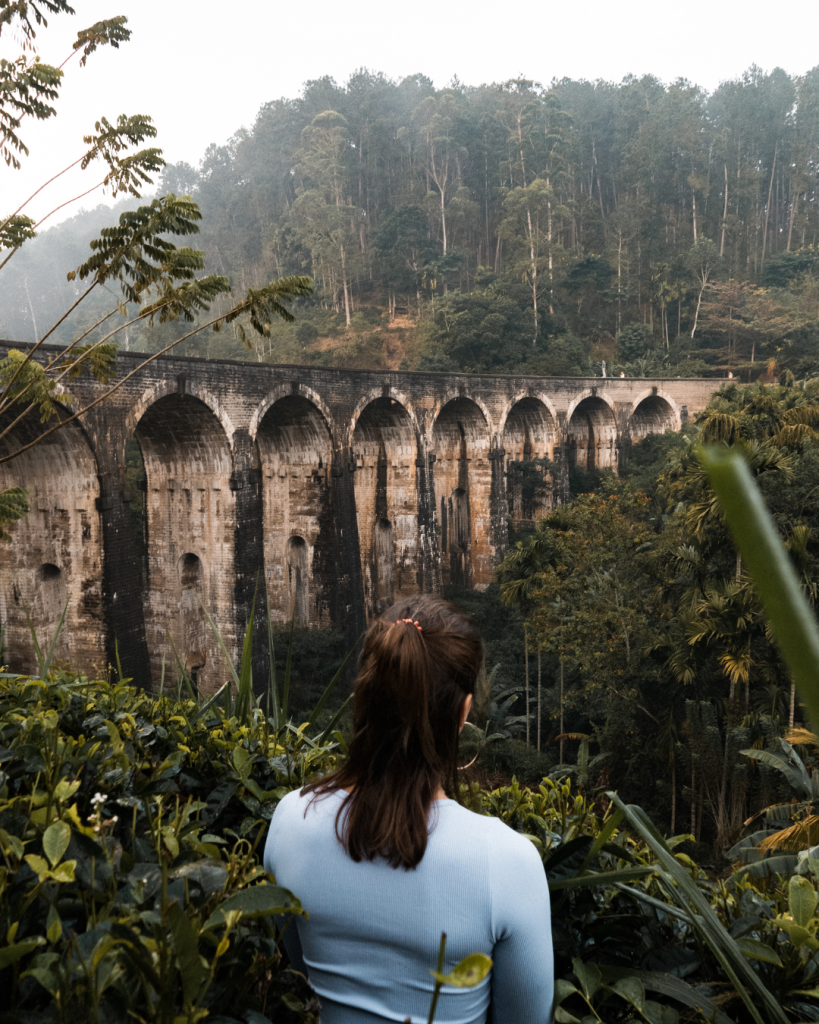
A Hiker’s Haven
Ella swept me off my feet with its cool air and tea-green hills. I trudged up Little Adam’s Peak at dawn, the mist curling around me, and stood there as the sun lit up a valley of waterfalls and train tracks.
This little town in Sri Lanka’s highlands is a hidden gem—chill, green, and far from Colombo’s bustle. I sipped Ceylon tea on a porch, watching the world wake up, and knew I’d be back.
Essential Visitor Information
When to Visit
December to March—dry and pleasant, 20-25°C (68-77°F). I went in February; the trails were perfect, and the skies clear.
Getting There
Fly to Colombo ($200-$300 from major hubs), then take a train to Ella (6-8 hours, $5-$15 for a scenic ride) or a bus (7 hours, $3-$10). I took the train—slow, rickety, and unforgettable.
Costs
Ella’s a bargain. Guesthouses start at $15-$30, boutique stays at $50-$80. Meals are $2-$5, hikes free. I spent $40/day, including a few $1 beers.
Where to Stay
- 98 Acres Resort: $60-$100, with tea estate views. I loved the balcony here.
- Zion View Ella: $25-$40, cozy and central.
- Hostels like Hangover: $8-$12 dorms—lively and cheap.
Must-See Places
- Little Adam’s Peak: A 1-hour hike, free, with killer views. I went twice.
- Nine Arch Bridge: A colonial marvel—watch trains roll by.
- Ravana Falls: A short tuk-tuk ride ($5) to a misty cascade.
Food Recommendations
Sri Lankan eats are spicy heaven. Kottu roti (chopped flatbread stir-fry) is $3-$5 and addictive—I had it daily. Try pol sambol (coconut relish) with rice for $2. Wash it down with arrack (coconut spirit, $2-$3).
Local Tips
- Bargain tuk-tuk fares—$1-$2 is fair in town.
- Pack a raincoat; showers sneak up.
- “Ayubowan” (hello) gets warm nods.
Spiti Valley, India: The Desert in the Sky
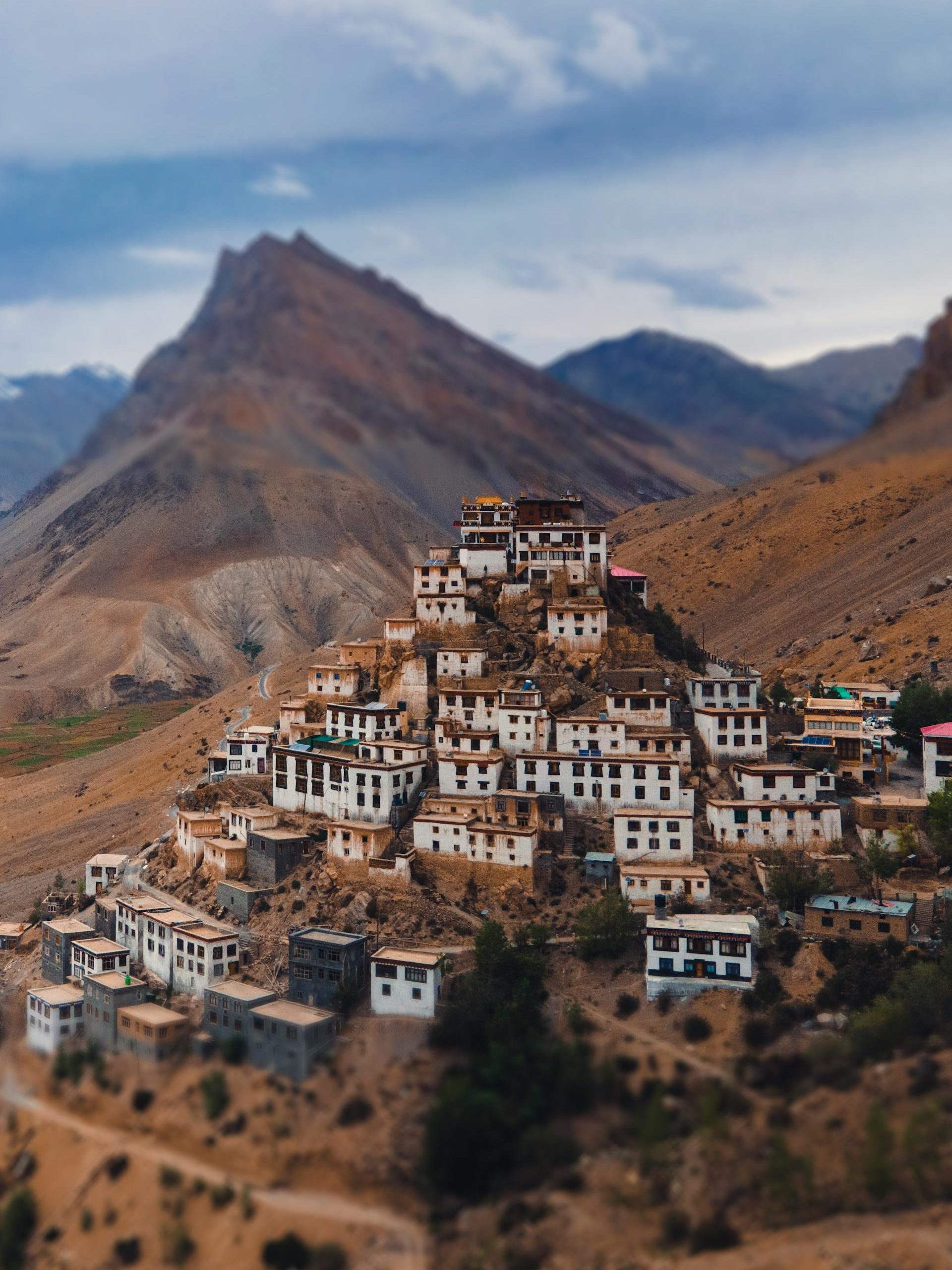
A High-Altitude Wonder
Spiti Valley felt like another planet. I rattled into this Himalayan desert in a jeep, 3,800 meters up, surrounded by barren peaks and Buddhist monasteries clinging to cliffs.
Tucked in Himachal Pradesh, it’s a hidden gem of stark beauty—think moonscapes, icy winds, and villages lost in time.
I sat with a monk in Key Gompa, sipping butter tea, and felt the world fade away.
Essential Visitor Information
When to Visit
June to September—roads clear, temps 10-20°C (50-68°F). I went in July; the sun was fierce, but nights chilled to 5°C (41°F).
Getting There
Fly to Delhi, then bus or drive to Manali (12 hours, $10-$20), then jeep to Kaza, Spiti’s hub (8-10 hours, $30-$50). I split a jeep with travelers—bumpy but epic.
Costs
Spiti’s affordable. Permits are $5-$10, guesthouses $10-$25, hotels $40-$60. Meals cost $2-$5. I averaged $35/day, including transport.
Where to Stay
- Zostel Spiti: $15-$30 in Kaza—social and comfy.
- Monastery Guesthouses: $10-$20 in Dhankar or Tabo. I stayed in Dhankar—basic but soulful.
- Camping: Free with your own tent—stars galore.
Must-See Places
- Key Monastery: A 1,000-year-old perch. I wandered for hours.
- Chandratal Lake: A 2-hour trek to a turquoise jewel—stunning.
- Kibber Village: High at 4,270m, quiet and wild.
Food Recommendations
Indian-Tibetan fusion rules. Thukpa (noodle soup) is $2-$4—warm and hearty. I loved momo (dumplings) for $3. Sip chai ($0.50) or butter tea ($1) to thaw out.
Local Tips
- Acclimatize in Manali—altitude hits hard.
- Carry cash; ATMs are scarce.
- “Tashi delek” (greetings) charms locals.
Asia’s Hidden Gems Await
Ten gems down—Koh Kood, Haa Valley, Raja Ampat, Yakushima, Song Kul, Phong Nha, Perhentians, Rara, Ella, and Spiti—and I’m still itching to tell you more.
These spots aren’t just dots on a map; they’re where I’ve found peace, adventure, and stories I’ll carry forever.
Whether you’re diving into Raja Ampat’s reefs or sipping tea in Ella’s hills, Asia’s got a way of surprising you when you veer off the tourist trail.
Nearby Places to Explore
- From Koh Kood: Koh Chang’s bigger beaches, a ferry away.
- From Haa Valley: Paro’s Tiger’s Nest, a day trip.
- From Raja Ampat: Sorong’s markets, a boat ride back.
- From Yakushima: Kagoshima’s volcanic vibes.
- From Song Kul: Bishkek’s bazaars.
- From Phong Nha: Hue’s imperial charm.
- From Perhentians: Redang Island’s luxury.
- From Rara: Pokhara’s lakes.
- From Ella: Haputale’s tea trails.
- From Spiti: Ladakh’s lunar landscapes.
Pick one, pack light, and go. These hidden gems are calling—trust me, you won’t regret answering.

